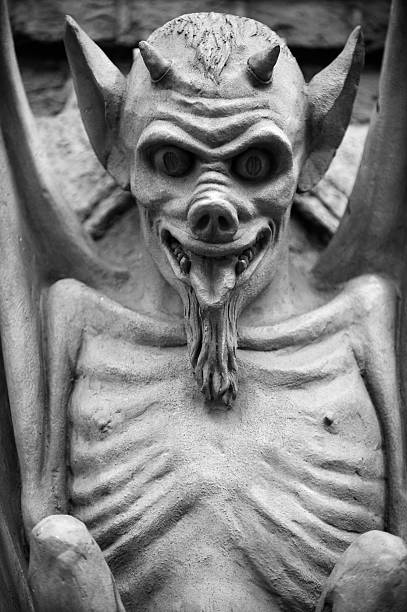Gargoyle Lore: Stone Guardians of Gothic Legend
Ancient Origins of Gargoyle Mythology
Gargoyles weren’t just stone grotesques perched on cathedrals—they were believed to ward off evil and protect sacred spaces. In medieval legend, they were born of fire and brimstone, cursed to sit in silence yet always watching.
The Function of Gargoyles in Gothic Architecture
More than decorative, gargoyles served a practical purpose: spouting rainwater away from cathedral walls. The word “gargoyle” stems from the French gargouille, meaning throat. Their twisted forms channeled storms, their mouths howling rain like demons screaming from the abyss.
La Gargouille: The Dragon That Became Stone
One legend tells of a dragon named La Gargouille that terrorized the Seine. It was slain, its skull mounted on a church. From that sacrifice was born the first gargoyle—a monster turned martyr to protect the very world it once menaced.
Modern Myth and Gothic Inspiration
Today, gargoyles haunt our stories, inspire gothic tattoos, and loom in video games. They symbolize endurance, mystery, and protection. Forged in stone and shadow, they remain eternal sentinels of the macabre.

The Gargoyle’s Oath
In Carvenmoor, the stone remembers.
High atop the gothic cathedral Sanctum Ferrum, one gargoyle watched while the others slumbered. Kael Varek, once a knight who defied a tyrant king, had been cursed into stone—wings spread, claws clenched, eyes forever fixed on the city he tried to save.
Centuries passed. Carvenmoor forgot its guardians. But when fog crept from the sewers and eyeless things began pulling townsfolk into the dark, Kael cracked free from his perch.
He hunted them silently, a beast of vengeance in the night. But on the seventh night, the cathedral burned. At its steps stood a girl, blood on her arms and a cursed name: Drennic—descendant of the very king Kael once fought.
But instead of striking her down, Kael spoke. He saw defiance in her. Hope.
He passed her his obsidian blade, his curse lifting with the rising sun. His body turned to ash. In his place, the girl stood—scarred, strong, and silent.
“Let your guardians choose to fight, not to slumber.”